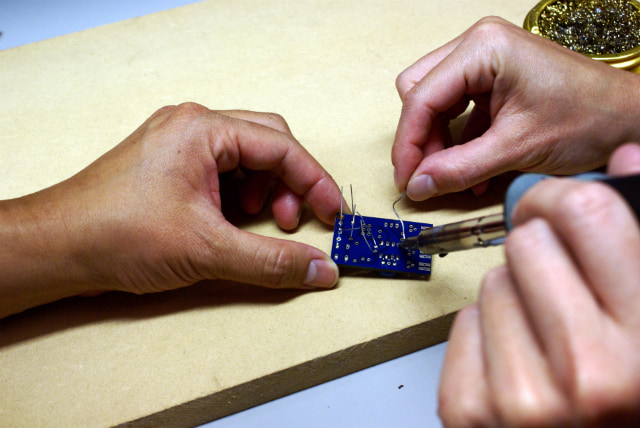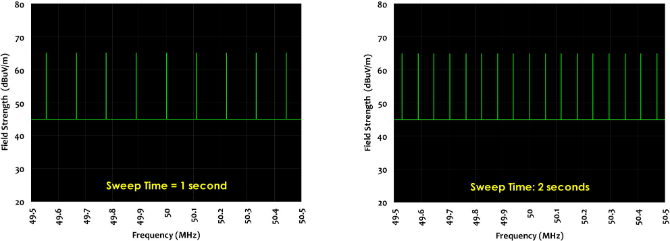The Difference Between Narrowband and Broadband Signals
The difference between a broadband and a narrowband signal is a key distinction when measuring electromagnetic noise and testing for electromagnetic compatibility. During EMC testing, differentiating between narrowband and broadband disturbances is essential for pinpointing the source of noise so appropriate corrective action can be taken.

Narrowband vs. Broadband Disturbances
A narrowband electromagnetic disturbance “has a bandwidth less than or equal to that of a particular measuring apparatus, receiver or susceptible device,” according to the International Electrotechnical Commission.
A broadband disturbance, on the other hand, is “an electromagnetic disturbance which has a bandwidth greater than that of a particular measuring apparatus, receiver or susceptible device.”
Measuring Narrowband and Broadband Signals
Spectrum analyzers and EMI receivers are frequently used in testing labs to measure electromagnetic interference. Often, both narrowband and broadband noise will be present in the test results generated by these tools. In these cases, further signal analysis is required in order to make a determination.
The following diagnostic methods can be used to identify whether a signal is broadband or narrowband:

- Resolution bandwidth testing - whereby the amplitude of a broadband signal will increase when the instrument resolution (IF) bandwidth is increased.
- Peak vs. average detection testing - which compares the amplitude between a peak and an average signal. Broadband signals will produce a notable change between the two measurements, whereas narrowband signals will not.
- Sweeptime testing - in which response spacing can be used to determine whether a signal is broadband or narrowband. Narrowband signals will produce responses that change with respect to the frequency span, but not with respect to the instrument’s sweep time. Conversely, broadband signal response spacing on the instrument’s display will decrease as sweeptime increases, but will stay constant with respect to frequency span.
Tuning testing is another method for determining the difference between a narrowband and broadband signal, although it is generally only used in older commercial and military standards.
Contact Com-Power Corporation for Assistance
Having the right spectrum analyzer for EMC testing is essential in your ability to differentiate between broadband and narrowband signals. Let Com-Power Corporation match you with the best tool for the job. Contact our office to speak with an engineer today.